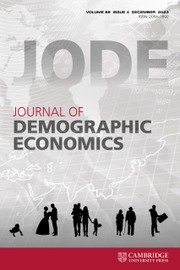No CrossRef data available.
Article contents
The network ties behind commercial pension insurance purchase: empirical evidence from China
Published online by Cambridge University Press: 19 December 2024
Abstract
China is entering a deeply aging society gradually, and individual pension allocation behavior has a profound impact on the practice and effect of national strategies to actively cope with population aging. This paper constructs a dyad model based on the influence path of social network ties in individual commercial pension insurance purchasing decisions, and then validates the path by building a generalized linear mixed model (GLMM) based on Bayesian approach with the national longitudinal sample data of China. The empirical results show that, firstly, strong ties social interaction (e.g., visiting friend's house) positively influences individuals' commercial pension insurance purchase behavior; secondly, the less the frequency of individual social interaction is, the less significant the positive influence of social interaction on individual commercial pension insurance product purchase is; finally, between 2013 and 2018, the intensity and frequency of social interactions among middle-aged and elderly people in China has been changed dramatically by the shock of the popularity and development of digital social tools. The influence of strong ties social interaction on insurance purchase behavior becomes weaker and weaker, while that of weak ties becomes stronger.
- Type
- Research Paper
- Information
- Copyright
- Copyright © The Author(s), 2024. Published by Cambridge University Press in association with Université catholique de Louvain


